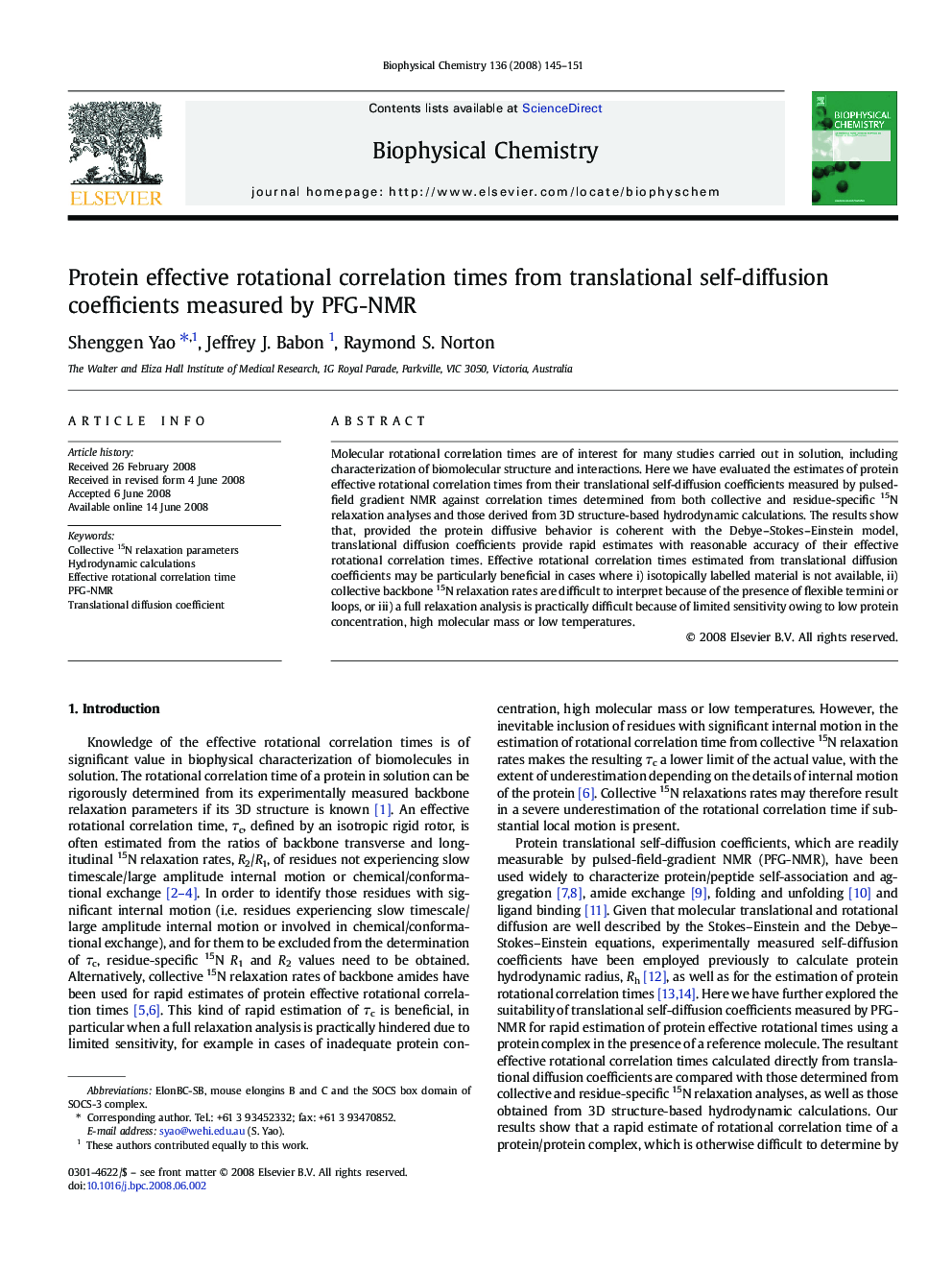| Article ID | Journal | Published Year | Pages | File Type |
|---|---|---|---|---|
| 5371828 | Biophysical Chemistry | 2008 | 7 Pages |
Abstract
Molecular rotational correlation times are of interest for many studies carried out in solution, including characterization of biomolecular structure and interactions. Here we have evaluated the estimates of protein effective rotational correlation times from their translational self-diffusion coefficients measured by pulsed-field gradient NMR against correlation times determined from both collective and residue-specific 15N relaxation analyses and those derived from 3D structure-based hydrodynamic calculations. The results show that, provided the protein diffusive behavior is coherent with the Debye-Stokes-Einstein model, translational diffusion coefficients provide rapid estimates with reasonable accuracy of their effective rotational correlation times. Effective rotational correlation times estimated from translational diffusion coefficients may be particularly beneficial in cases where i) isotopically labelled material is not available, ii) collective backbone 15N relaxation rates are difficult to interpret because of the presence of flexible termini or loops, or iii) a full relaxation analysis is practically difficult because of limited sensitivity owing to low protein concentration, high molecular mass or low temperatures.
Related Topics
Physical Sciences and Engineering
Chemistry
Physical and Theoretical Chemistry
Authors
Shenggen Yao, Jeffrey J. Babon, Raymond S. Norton,
